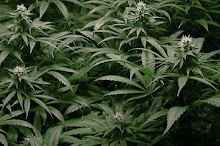By Sirius J · Fri Mar 13, 2015
Here's a bite-sized primer on cannabigerol, commonly known as CBG, and its place on the forefront of cannabinoid research.
What is CBG?
Scientists first discovered cannabigerol, or CBG, in 1964 as a constituent of hashish. In 1975, researchers found out CBGA (the acid form of CBG) is the first cannabinoid formed in the plant; the first expression of cannabis’ unique class of constituents. From there, CBGA gets transformed into THCA, CBDA or CBCA by the action of enzymes. CBGA is the essential precursor for all the cannabinoids we know and love.
Does CBG get you high?
While mostly regarded as a non-psychoactive cannabinoid, technically the jury is still out on this one. Until someone dabs purified CBG, we won’t know what ingesting significant amounts of it actually does. CBG needs higher temperatures to vaporize.
What does the medical research say about CBG?
Just recently in January 2015, researchers discovered that CBG had neuroprotective effects in mice with Huntington’s Disease, a disease characterized by the degeneration of nerve cells in the brain. CBG slowed down progression of colon cancer in mice, a promising result that may soon lead to a new treatment method. Evidence suggests CBG is a highly potent alpha-2-adrenoceptor agonist and moderately potent 5-HT1A-receptor antagonist, giving it a wide range of potential therapeutic potential as an antidepressant, for the treatment of psoriasis, and as an analgesic.
In spite of all the good research, in one study CBG reversed CBD’s antiemetic properties by interacting with it at the 5-HT1A-receptor site.
Where do I find CBG?
CBG is minor cannabinoid in pretty much all varieties of Cannabis, generally less than 1%. Nevertheless, narrow-leafleted drug strains from the Indian-subcontinent, were found to have slightly higher levels of CBG than others. Without becoming a landrace strain hunter, relatively high amounts of CBG can be extracted from budding plants about three-quarters of the way through flowering. Information on CBG content throughout flowering can be gathered from an analysis done on Bediol®, a medicinal strain produced by Bedrocan BV Medicinal Cannabis, a Dutch supplier of research grade pot. They flowered the Bediol® for eight weeks and analyzed the content of different cannabinoids every week; CBG was the highest at week 6.
What is the future for CBG?
Another puzzle piece in the story of medical cannabis, research on CBG is certain to continue. As consumer interest in CBG rises as well, breeders will soon be on the case of making a high-CBG strain.





No comments:
Post a Comment